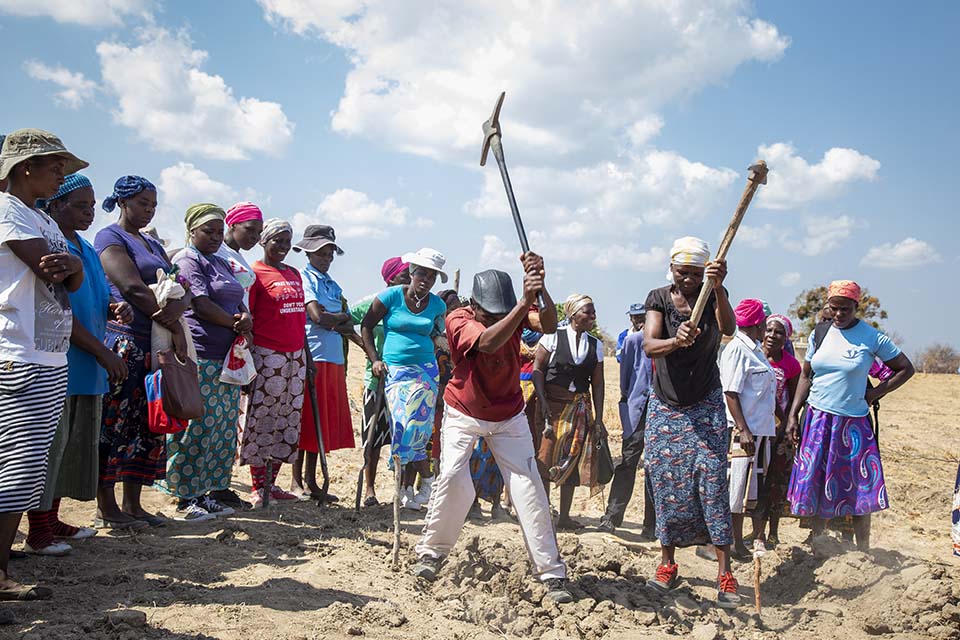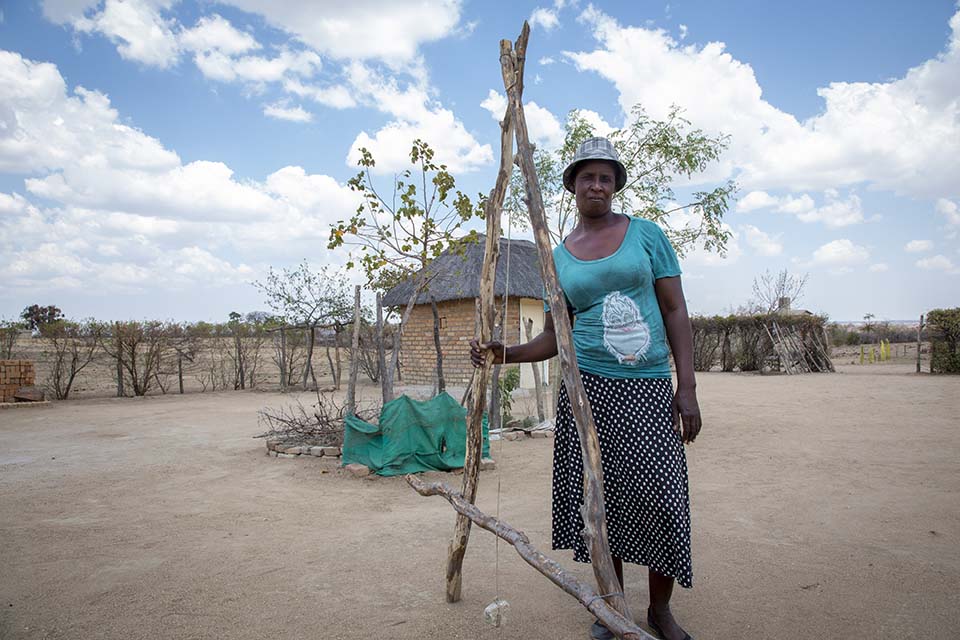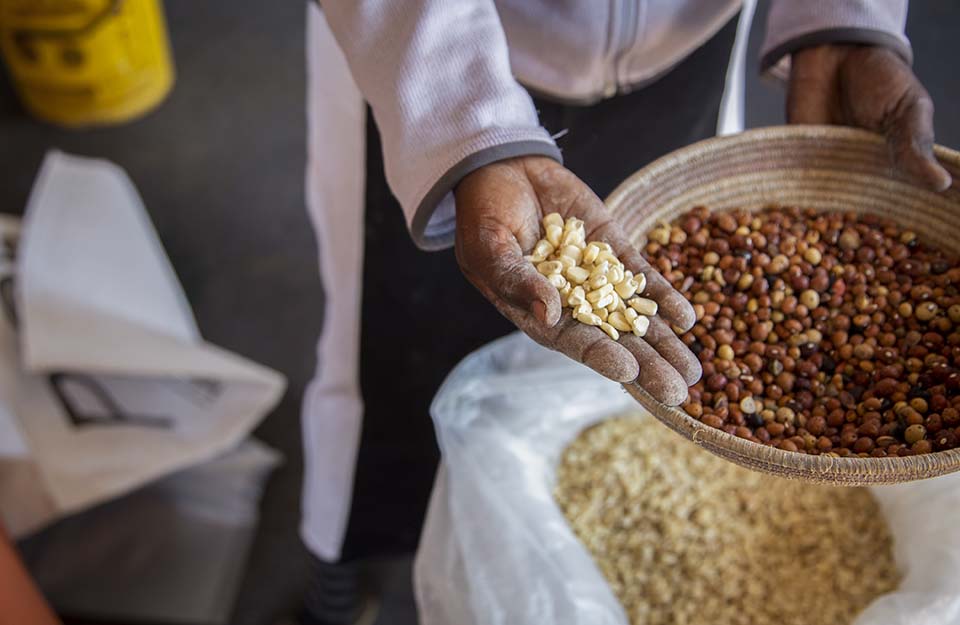

Increasing Farm Productivity in Zimbabwe
"I can really see a difference between the people who are practicing all we are learning here and the people who don’t."
Kwite village, in the Matabeleland South province of Zimbabwe, is right in the middle of the country’s cattle belt. Most rural farmers in this area own a few head of cattle as well as grow crops. The cattle are like walking banks for small-scale cattle farmers, and losing one means losing a large portion of a family’s life savings. Unfortunately, keeping cattle alive is becoming ever more difficult due to a long list of interrelated threats.
Droughts and floods happen with increasing frequency in Zimbabwe and other countries in Southern Africa. Small-scale farmers who depend on rain-fed agriculture are hit the hardest by the unpredictable cycles of drought and flood. As a result, the agricultural skills farmers have passed from generation to generation in these communities are no longer producing the yields they have seen in the past.

Farmers digging a contour in a demonstration plot in Kwite village, Zimbabwe.
Photo by Dooshima Tsee/CRS
The changing climate, pest attacks, and a failing economy make it increasingly difficult for low‑income families to meet their most basic needs. Crop harvests are down for the second year in a row and food prices increase every day. Farmers are watching their animals die because there is no vegetation for animals to graze and commercial animal feed is too expensive.
Olipha Mayo is a farmer in Kwite. She had six cows, five goats, and 20 chickens but recently lost three of her cows and 10 of her chickens. Today, Olipha is at a demonstration site with other members of a farmer group as part of the RECOVER project, led by Catholic Relief Services with funding from the U.S. Agency for International Development Office of Foreign Disaster Assistance.
She stands under the hot sun in a dry, patched field with about 30 other people. It might not look like any class you have attended, but life-changing learning happens on dusty plots of land in this region of Zimbabwe.
Olipha has an important job today. She holds sturdy tree branches tied together in a big A-frame. This is a simple but vital tool the farmers can use to find contours in the land.
Olipha concentrates on holding the frame steady as she and other members of the group practice marking and digging dead level contours. The contours they dig will trap water at the root level, helping plants access the little rainfall they receive and maximize the lifesaving water they need to grow.

Olipha Mayo holding an A-frame in Kwite village, Zimbabwe. Photo by Dooshima Tsee/CRS
How well Olipha learns and replicates these new skills will determine if she can save the rest of her cattle.
“There are still months before we can harvest. First the rains come, then we plant, and it will be months before we have food. I am beginning to understand the importance of all the training we are receiving. I can really see a difference between the people who are practicing all we are learning here and the people who don’t,” Olipha says.
Marking and digging contours is just one of the new agricultural methods farmers like Olipha learn at these demonstration sites. Farmers also learn new ways to make silage and plant fodder for their animals, the best feed formulation for their animals, and better ways to process their grains after harvest.
Wananani Dube, a farmer in neighboring Hikwa village, is most excited about post-harvest processing of grains. Wananani has been a farmer for as long as she can remember. She learned all she knew about farming from her parents. Now, with the farmer groups, she is learning new, more effective farming methods to cultivate and preserve produce post-harvest.
Each farmer in Wananani’s group received two Purdue Improved Crop Storage, or PICS, bags. These bags are specially made with two layers to provide pest-proof, chemical-free storage for grains.
“At first, when we were told about the PICS bags, I was skeptical. I wondered if the bags will work.” Wananani says. “I stored some grains for six months, and when I checked, they had not been infested by insects and were good to use. Now I am saving to buy more PICS bags because they work so well.”

Wananani Dube displays grain stored in a PICS bag, in her hand, beside those stored in regular bags, in the bowl.
Photo by Dooshima Tsee/CRS
Being able to store grains securely—and for longer—means Wananani has healthy, chemical‑free food for her family when food is scarce. She can also choose when she sells her produce. Selling insect‑free grain later in the season when prices begin to peak will get her a higher price.
CRS works through farmer groups to help farmers in southern Zimbabwe learn the new skills they need to adapt and survive climate events. Farmers practice the new methods at demonstration sites and learn from each other.
Sithembiso Ncube is the proud owner of one of the 129 model chicken houses the project is teaching farmers in rural communities to build. Sithembiso lives right beside a demonstration site. Her new chicken house is one of the sites where other farmers meet to learn animal care that optimizes production. With support from the RECOVER project, CRS provided materials for Sithembiso to build a better chicken coop for her chickens. In less than a year, Sithembiso’s five chickens multiplied to a flock of 30 chickens.
“When the chickens were in the small coop, they did not multiply. Some even died. Now that I have moved them to the larger coop, the increase is obvious. I also like this new chicken house because I can clean it more easily and even disinfect it. It has made such a difference in my family. We eat better, and as my flock increases I will begin to earn more money,” Sithembiso says.
In this region of Zimbabwe, CRS has trained 250 farmers in soil and water conservation, crop production, pest and disease control, and storage using PICS bags. These farmers in turn each trained 30 farmers or more. This increases productivity for individual farmers and the larger community benefits as the ideas and methods are shared among them.




